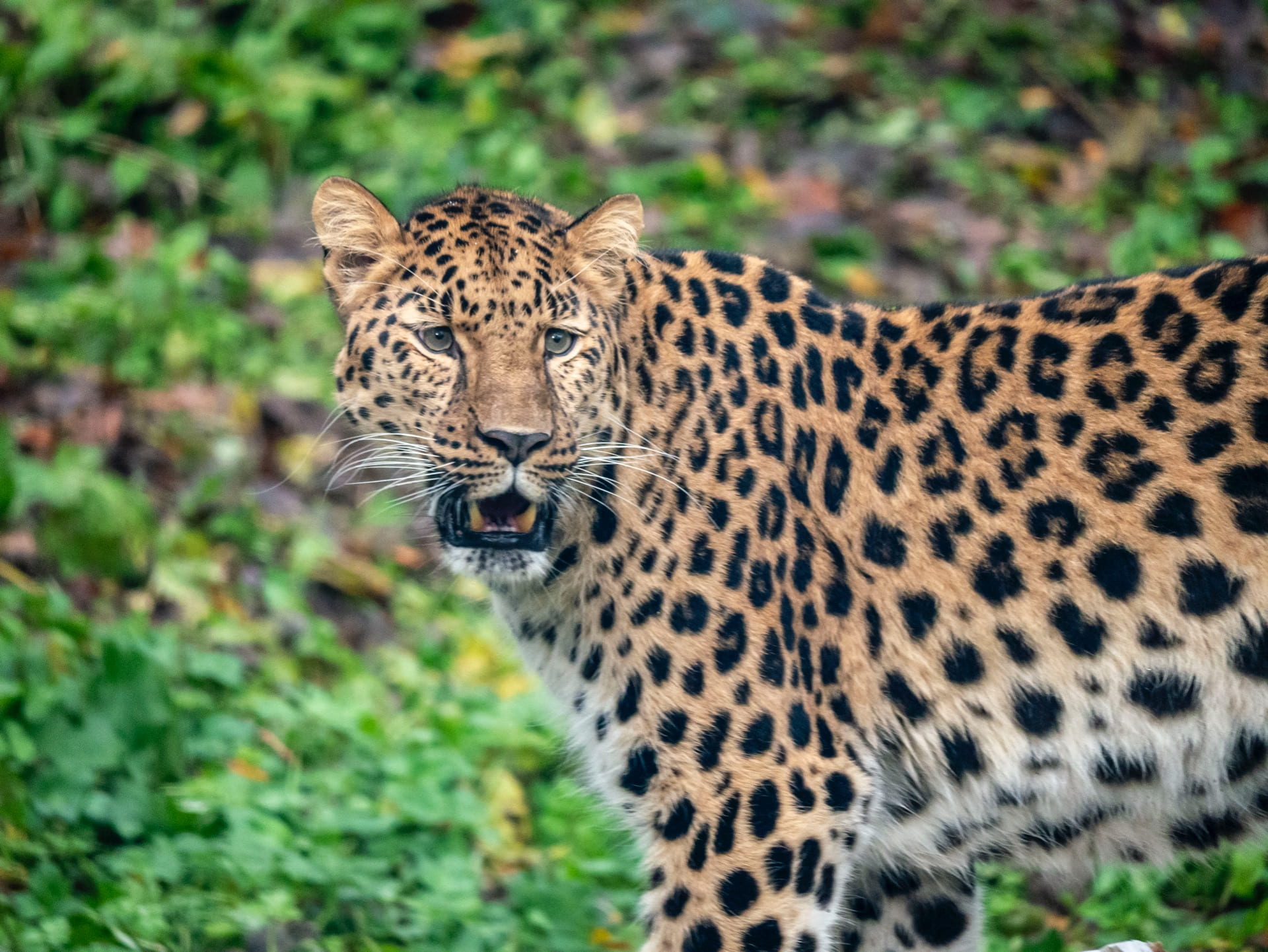
In the serene expanse of Dartmoor, a story of hope, resilience, and the fierce fight against extinction unfolds at the Dartmoor Zoo. The central character of this narrative is Freddo, a striking Amur leopard whose journey and existence at the zoo symbolize a broader conservation effort to save one of the world’s most endangered species. With fewer than 400 of his kind left globally, every step Dartmoor Zoo takes is not just significant; it’s a battle against time.
Freddo’s journey to Dartmoor is a testament to adaptability and the complexities of conservation efforts. “Having moved between zoos a few times, he adjusted to the process very well and upon arrival at the zoo, he was calm and settled in very quickly,” shares Emma Thomas, the Marketing Manager at Dartmoor Zoo. Freddo’s enclosure, a carefully crafted slice of Siberia, includes Siberian Elms, Larches, Boxwoods, and a Flowering Cherry tree to mimic a mountainous forest. “Everything that has been selected is with his adjustment and ease of move in mind,” Thomas explains, highlighting the thoughtful approach to replicate a natural habitat.

The mission of Dartmoor Zoo extends beyond providing a home for Freddo. It’s about actively contributing to the survival of his species. “Our long-term goal is to find a suitable mate for Freddo. By finding a desirable genetic match, we will hopefully welcome new cubs into the world,” says Thomas. However, the task is daunting. With such a small population, finding a genetically suitable partner without risking inbreeding is a significant challenge. “When you have a pot of 220 leopards but say half of them are male, and then a further 20% are related, etc., the number of potential matches drops significantly and fast!” Thomas elaborates.
The zoo navigates these complexities using various tools like the Zoological Information Management System (ZIMS) and the European Endangered Species Programme (EEP). These platforms help track animals’ genetic backgrounds and recommend potential matches, ensuring the genetic health and diversity of future generations.

Despite the advanced tools and dedicated efforts, the road to successful breeding is fraught with challenges. From finding a suitable mate to managing the logistics of transportation and introduction, each step requires meticulous planning and a deep understanding of the animals’ behaviors. “The introduction could go either way,” Thomas cautions, emphasizing the unpredictability of animal behavior.
To prepare for potential new arrivals, Dartmoor Zoo is already planning ahead. “We are currently fundraising for assistance with a new enclosure,” says Thomas, showcasing the proactive measures being taken to accommodate future cubs. The new facilities would include specific features like a cubbing den, ensuring the safety and well-being of the leopards and their offspring.
The well-being of Freddo and other animals at the zoo is of paramount importance. A dedicated team ensures regular changes in the enclosure, enrichment activities, and training to keep the animals engaged and healthy. “We do weekly wellbeing checks on our animals and regular research to monitor their behavior,” Thomas notes, highlighting the ongoing commitment to animal welfare.
The local community and animal enthusiasts play a crucial role in supporting Dartmoor Zoo’s conservation initiatives. “Come and visit us, fundraise for us, or donate!” urges Thomas. Every contribution, whether through a visit, a bake sale, volunteering, or a donation, helps sustain the zoo’s efforts and brings the world one step closer to ensuring the survival of the majestic Amur leopard.
Dartmoor Zoo, with Freddo as its symbol, stands at a critical juncture in the fight against extinction. The story of Freddo and the zoo’s conservation efforts is a powerful reminder of the delicate balance of our ecosystem and the collective responsibility we share in preserving it. As the world watches, Dartmoor Zoo continues its vital work, echoing the call of the wild and striving to secure a future where the Amur leopard roams free and thriving
